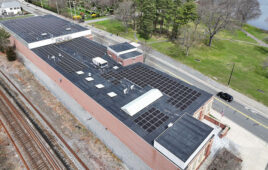Researchers from the National Renewable Energy Laboratory (NREL) and the University of Colorado, Boulder (UCB), have developed the first designed molecular system that produces two triplet states from an excited singlet state of a molecule, with essentially perfect efficiency. What does that mean for the solar industry? The development could lead to a 35% increase in light-harvesting yield in cells for photovoltaics.
The experiments used a process called singlet fission to demonstrate a 200% quantum yield for the creation of two triplets of the molecule 1,3-diphenylisobenzofuran (DPIBF) at low temperatures. In singlet fission, a light-absorbing molecular chromophore shares its energy with a nearby non-excited neighboring molecule to yield a triplet excited state of each. If the two triplets behave independently, two electron-hole pairs can be generated for each photon absorbed in a solar cell. This process could subsequently increase the conversion efficiency of solar photons into electricity or solar fuels — involving using the sun to create liquid or gaseous fuels rather than only electricity — by a third. The research has been published in the Journal of the American Chemical Society, by authors Justin C. Johnson and Arthur J. Nozik of NREL, and UCB’s Josef Michl.






Could this increase in electron movement lead to an increase in the hyrd. cells of water too,in order to inturn increase the hyrd. fuelcell out put?